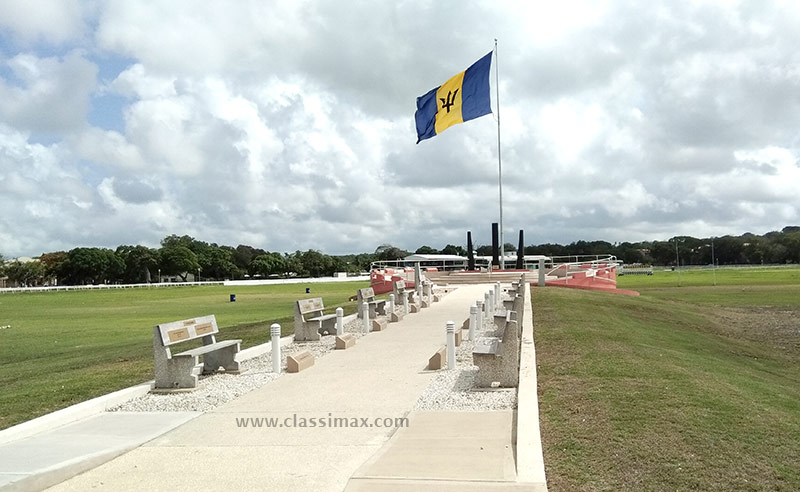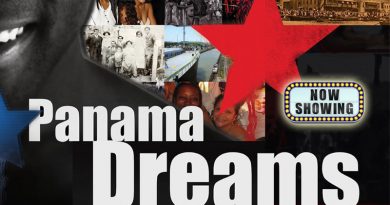Barbados’ Historical Statues and Monuments You Must See
Barbados is very rich in culture and it’s historical statues and monuments are across the island to prove it.
As you visit each icon you would realize the positive effect they had and left on this beautiful land and should not be forgotten by the generations to come.
Read about the history below.
All Inclusive Things To Do In Barbados For Everyone – CLICK HERE
Errol Barrow Statue
One of the most famous statues in Barbados is that of the late Sir Errol Walton Barrow, Barbados’ first Prime Minster.
This statue is a tribute to Barbados. It celebrates the Father of Independence and applauds him for his contribution to the social, political and physical transformation of Barbados.

Prior to Errol Barrow becoming Prime Minster, most poor Barbadians could only afford a primary level education.
For the first time in Barbadian history, education was free up to the tertiary level. He also created the National Insurance and Social Security Scheme and provided free breakfast and lunch for primary school children.
The Errol Barrow Statue is a 9ft tall bronze statue that is approximately 2000 pounds and was carved by a St. Lucian sculptor by the name of Ricky George.
Errol Barrow was a politician for 36 years, and before he joined the political arena, he served as a pilot for the Royal Air Force during World War II. He was kindly known as ‘ The Skipper” and was known and loved for his down to earth and friendly personality.
Most Barbadians identified him as the man that led Barbados to independence on November 30th, 1996. Not only did he fight for Barbados’ Independence from the British, but he fought for stronger regional integration within the Caribbean.
On January 21st, 2007, Errol Barrow’s statue was unveiled in the renovated Independence square, this area is known for being one of his beloved political platforms.
In honor of Errol Barrow, January 21st is celebrated as a public holiday in Barbados since 1989 and this date is a day of national importance and is celebrated as Errol Barrow Day. The late Errol Barrow is one of Barbados’ National Heroes.
Independence Day in Barbados – CLICK HERE
Sir Grantley Adams Statue

Born in 1898, he was the first Premier of Barbados and the first and only Prime Minister of the then West Indies Federation.
He is also one of Barbados’ National Heroes. The first Premier of Barbados statue is located at the front of the Barbados Government Headquarters.
On what would have been his hundredth birthday , the Sir Grantley Adams statue was unveiled on April 28th, 1999. The statue was designed by Karl Broodhagen.
Emancipation Statue

Another famous statue in Barbados is the emancipation statue which is known among locals as the “Bussa Statue”.
This statue signifies and celebrates the abolition of slavery and the emancipation of the Barbadian population from the institution of slavery. On March 28th 1985 ,on the 150th anniversary of the end of slavery ,this statue was unveiled.
Mr Karl Brooghagen was the architect that sculpted Bussa. Bussa was a rebel slave who organized one of Barbados’ famous rebellions. He was revolting against the oppressive system known as slavery.
The statue is an image of Bussa with chains that are unshackled, at the bottom of the statue are excerpts of a poem written by Kamau Brathwaite, a famous Barbadian poet. A Barbadian emancipation folk song is also featured at the bottom of the statue.
The Bussa / Emancipation statue is located at the roundabout in Haggat Hall, St. Michael.
Grand Jete Statue

This statue is a bronze life-size of British ballet dancer David Wall. It can be found on the luxurious, well manicured garden of the Crane Resort , overlooking the Atlantic ocean.
Enzo Plazotta, an Italian sculptor carved the statue and it was then presented to The Crane Resort in 1981 by Julian Masters. The only one of its likeness can be seen in Millbank, Westminster in London.
Lion at Gun Hill

In 1868, one man along with four assistants carved this well known statue. The Lion at Gun Hill is a favourite and a must see tourist sight in Barbados. Captain Henry Wilkinson and four military labourers carved a lion out of one single rock!
At the time, Captain Henry Wilkinson was an officer at the Gun Hill Signal Station which is situated above where the lion currently resides.
The Lion at Gun Hill is 700 feet above sea level, which allows visitors to enjoy the panoramic view of the south coast.
Lord Admiral Horatio Nelson Statue

On March 22nd 1813, the statue of Lord Admiral Horatio Nelson in Barbados was created in the city of the Bridgetown.
The statue was made from bronze by Sir Richard Westmacott known as “ the first castor of bronze in the kingdom.” The statue is described as an brilliant replicate of the British Admiral.
Montreal and Birmingham were the first cities to create a monument to honor Lord Admiral Horatio Nelson’s memory.
The monument in Bridgetown pre-dates the Nelson Column in Trafalgar square by 30 years.
Trafalgar square was renamed Heroes square in 1999 in Barbados. Lord Admiral Horatio Nelson visited Barbados for the last time on June 4th 1805, while searching for an enemy.
The Battle of Trafalgar was fought on October 21st 1805, and was considered the most well-known naval battle in history, and was where the Royal Navy led by Lord Admiral Horatio Nelson devastated Napoleon’s collective, the Spanish and French fleet.
Barbadians received the news of Lord Admiral Horatio Nelson’s great victory on December 20th,1805. In 1805 after Horatio Nelson was victorious against the French in Cape Trafalgar in the southern coast of Spain, his popularity in Barbados increased.
He successfully defeated the French ensuring Barbados would not become a part of the French West-Indies. This battle was the most pivotal naval victory of the wars, guaranteeing British naval supremacy during the rest of the Napoleon Wars.
It was also vital for trade from Britain to the island. To show gratitude, a memorial service was held on January 5th 1806 at the St Michael’s Parish Church (now St Michael’s Cathedral). Within days Barbadians were raising funds for a memorial statue.
They then acquired the statue and land, naming it Trafalgar Square and paying tribute to the Lord Admiral Horatio Nelson by creating the statue.
On the anniversary of the Battle of Trafalgar wreaths are laid at the statue. However not all Barbadians are fond of the Lord Admiral Horatio Nelson Statue.
Some Barbadians believe that he did not like Barbados. Subsequently, most Barbadians have stop laying wreaths and the direction in which he faces has change.
Rock Hall Freedom Monument

The Rock Hall Freedom Monument is located at Rock Hall Village in the parish of St Thomas.
In the parish of St. Thomas , five years after emancipation , former ex slaves from the Mount Wilton Plantation established Barbados’ first free village.
The Rock Hall Freedom Monument was established to remember and celebrate their effort.
The Statue is made of 20 feet stainless steel cast in bronze and was created by Mr. Stanton Haynes, a senior architect in the Ministry of Public Works; it portrays a family of three ex-slaves standing proudly overlooking the Rock Hall Village.
On August 5th 2005, the monument was officially unveiled and many of the descendants of the ex-slaves turned up to witness.
The government has indicated that it has plans to create a Heritage Village in the area with kiosks for the sale of art & craft and an amphitheater.
Sir Frank Walcott Statue

Sir Frank Walcott was born in 1916.He was a passionate Barbadian trade unionist, a politician, and an ambassador.
He was pivotal in the success of the trade union movement and organizing the Barbados Labour Movement.
Not only did he organize workers and negotiate on their behalf, but was a visionary, especially in his approach to bargaining for improved conditions for the working Barbadian population.
His seven foot statue which was carved by Jason Brent Hope, can be viewed at the Sir Frank Walcott Building which was previously named the National Insurance Building.
Sir Frank Walcott was known for being very upfront and frank. He was made a National Hero of Barbados in 1998 and unfortunately passed away a year later in 1999.
Sir Garfield Sobers Statue

On Sunday April 28th 2002, as part of the Heroes day celebration, a 1.5 tonne bronze twelve foot statue of Sir Garfield Sobers was unveiled to the public of Barbados.
At the bottom of the statue is a plaque with all his life achievements in cricket. Sir Garfield Auburn Sobers is a cricket legend, and is recognized as the world’s greatest all-rounder.
This statue was dedicated to the legend for his accomplishments in cricket. It was designed by Caribbean Sculptors Karl Broodhagen and Virgil Broodhagen.
The Sir Gary Sobers Statue, as it is called in Barbados, was originally located at the Sir Garfield Sobers Roundabout in Wildey but has been relocated to the Kensington Oval Facility since the 19th of November 2006.
The statue can now be viewed near the entrance of the Sir Garfield Sobers Players’ Pavilion, on the Pickwick Walk.
Sir Garfield Sobers was born in 1936, he played for the West Indies cricket team from the year 1953 to 1974 . During his career he recorded 365 not out, against Pakistan at Sabina Park, Jamaica in 1960.
First person to score (6) Sixes in (1) over for Nottinghamshire vs Glamorgan at Swansea in 1968.
He captained the West Indies Team in 39 consecutive test matches. He has a test total of 8,032 runs from 93 matches (averaging 57.78), test wickets of 235 and 109 Catches.
He was named one of the five Wisden Cricketers of the Century in the year 2000.
Sir Garfield Sobers was Knighted by Queen Elizabeth II in 1975 and became a National Hero in 1998.
Holetown Monument

The Holetown Monument memorializes the initial English landing in Barbados by Captain John Powell in 1625.
Barbados was claimed on behalf of King James I of England English territory up until Independence in 1966. This pillar shape monument is situated in Holetown on the west coast of Barbados.
Independence Monument

See video – CLICK HERE
The independence monument is located at the Garrison Savannah. It was unveiled at the 50th independence day celebration on November 30th 2016.
This monument was designed by twenty-three-year-old student, Taisha Carrington. It illustrates some of Barbados important moments and bears the name of some of Barbados successive leaders.




